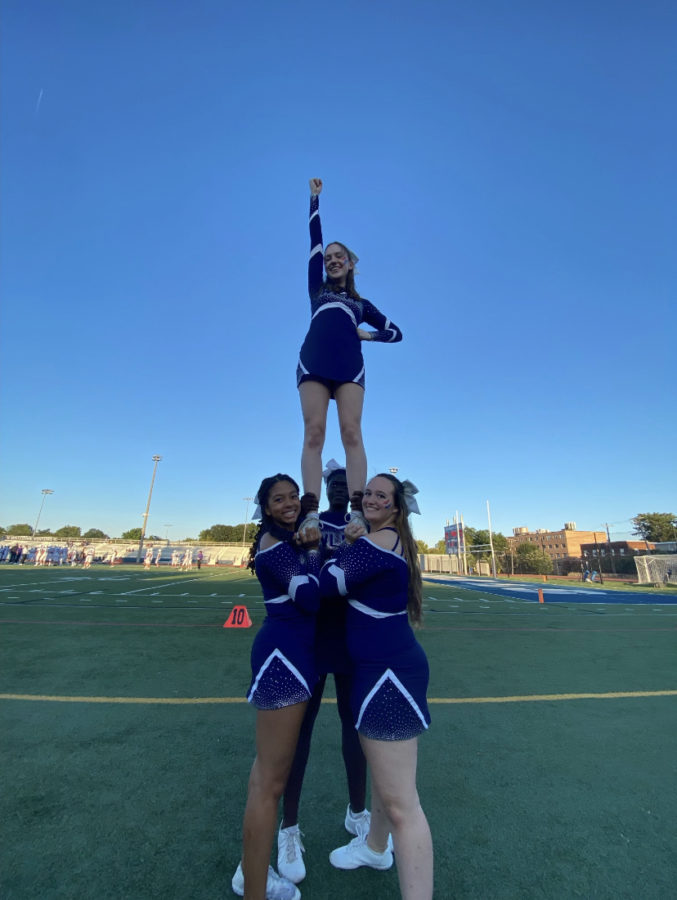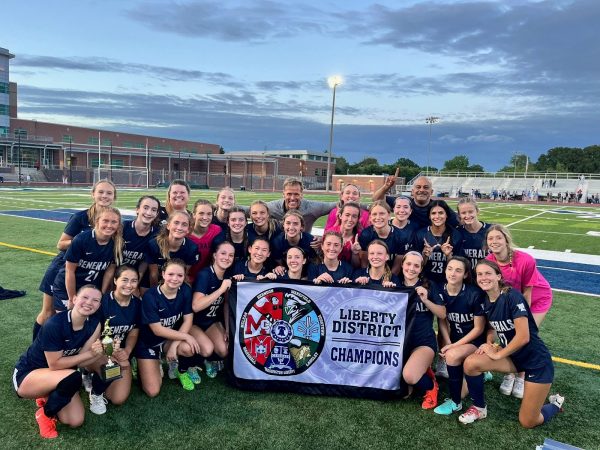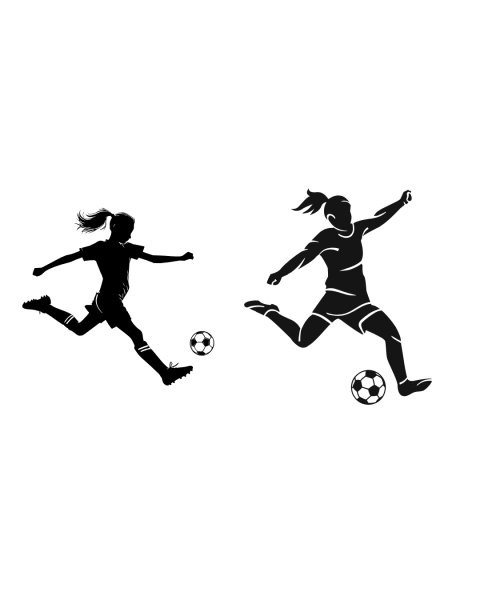Cheerleading, Do You Have What It Takes?
Cheer is a challenging and intense sport requiring passion, sharp instincts and strenuous work daily. Some often invalidate it as a “real sport” because of preconceived notions that all it takes to be a cheerleader is waving pom poms around and smiling on the sidelines, cheering on the “actual” sport. At least, some seem to think so.
“I don’t think [people] really understand what goes into cheer.” Alexi Caruso, a junior on the varsity cheer team, said. “I also didn’t understand what went into cheer before I tried out. But once I did, I realized that cheer is a lot more, and it is a serious sport.”
One of the most vital parts of cheerleading is the team. It is a collaboration; everyone impacts each other through their attitudes and support for their teammates to do their best and reach their full potential. Physically, one must rely on their teammates to keep them alive during stunts, and emotionally it helps them to be close with the rest of the team when practices are hard, to get through it together.
“It’s just really fun to be able to have friends that not only I play a sport with, but I also see at school,” Caruso said. “It’s been a really great experience in making friends.”
Practices run from six to nine pm every day. Many say this gives them a few moments to themselves.
“If you’re going to do cheer, one thing I would advise you is to be prepared to put in that effort,” Nadja Petrovic, a sophomore on the varsity cheer team, said. “Be prepared to be there every single time, because if you miss even one practice, it’s gonna affect you.”
The coaches uphold rules that are in place to keep the team unified.
“We have to listen to the coaches and their instructions and be flexible with them,” Caruso said. “If they don’t want us in a particular stunt, we have to be accepting [of that] or if they want us in a different position.”
The coaches ensure their cheerleaders follow directions and keep them in order.
“We have specific practice wear that we have to wear on every day,” Alena Topchy, a junior on the varsity cheer team, said. “So one day we’ll have one practice shirt that we have to wear. If you’re not wearing the right shirt, or the right color bow, you have to do push ups. The coaches are really strict about that.”
Cheer, like other sports, takes a mental and physical toll. According to Camille Walker, a sophomore on the varsity team, it takes a lot of effort to do what they do, physically and mentally. They are doing many unnatural skills for an average person, with tumbling and stunting taking immense technique and strength. On top of this, one must stay focused 100% of the time to prevent accidents and pull off the stunt.
“The hardest thing about cheer is honestly the athleticism it takes,” Walker said. “It also takes a lot of discipline and mental strength because the skills that you do are hard. And they’re not necessarily natural, like tumbling and flipping and lifting people up and being in the air.”
Mental blocks are common for cheerleaders and make them unable to complete a stunt.
“Mentally, the hardest part about cheer is probably just getting over fears of either throwing, tumbling or stunting. Especially for the flier, [this] can be hard,” Topchy said. “You’re tight, six feet up in the air, and you have to keep smiling.”
One component of cheer is sideline cheer. They do that at sports games, such as football, where they excite the crowd and cheer on the football team. Some only know this side of cheerleading and hold that it is not an actual sport, contradicting their own cheerleaders’ views.
“I 100% view cheer as a sport,” Caruso said. It’s definitely a lot of work and we condition like any other sports team does. We train for three hours every day and it’s a lot on your body. I also view sideline cheer as a sport, because even though you’re just cheering on the sides, it’s still work. It’s not like you just have to cheer, you also have to make sure that you’re hitting everything sharp. There’s a lot more to it than what meets the eye.”
The team also competes against other schools in competitions, where they complete a three-minute routine and have a panel of judges evaluate their performance. Many people are unaware of this side of cheerleading and the effort it takes to pull off.
“In competition, you are coming up with a three-minute routine that you practice and practice every single day to perform, and [then] hopefully get the highest possible score,” Suzanna Monahan, a senior and captain of the varsity cheer team, said. “It’s only three minutes, but it’s a lot and we work very hard for it.”
Another thing many people need to understand about the sport is the behind-the-scenes of cheer practices and games.
“[A lot of people] just think that we cheer and smile, and wear bows and shake our pom poms and [that] it’s not really a sport,” Topchy said. “Besides cheering at football games, I think a lot of people don’t realize that we do have competitions or [that] practices are really intense, and the routines are very hard to do.”
These skeptics often voice their opinions to cheerleaders, further invalidating their skills and dedication to the sport.
“People have been telling me that [cheer isn’t a sport] since middle school, so I’m kind of used to it by now,” Monahan said. “It annoys me and I’m like, ‘Okay, well, that’s your opinion’, but I try to ignore it. It definitely is annoying because you feel invalidated. I do so much for the sport and it’s not recognized, and so that kind of sucks.”
Monahan also revealed her thoughts on how cheer does not take priority over other sports, mainly because it can be seen only as a “girl’s sport”.
“We’re sometimes disrespected in that sense, where it’s even something as small as our practice spaces,” Monahan said. “For football, if it’s raining outside, they take our practice space, but we were supposed to be there in the first place. So I feel like that’s kind of disrespectful. We were supposed to be there and it’s wet on “your” field, so why would you come into our spot?”
There are no guys on the team this year, even though no rules prohibit them. Cheerleaders hypothesize that they might be intimidated to try out based on the scarcity of guys on the team and what outside perspectives might think.
“I feel like a lot of people view it as a ‘girls only’ sport, which it definitely isn’t,” Caruso said. “I think that all genders should be able to do cheerleading and not feel self conscious about it or that they can’t do it.”
Even though there are some who attempt to invalidate their sport, cheerleaders are confident in their skills and determination.
“I don’t feel like anyone has the right to say that [cheer isn’t a sport], because they haven’t tried it. They haven’t experienced it. They don’t really know how hard it is, and how much you have to actually be an athlete to be a cheerleader,” Walker said. “I can confidently say that probably nine out of ten people cannot do what we do.”
What did you think about this story? Do you have any suggestions for improvements or other articles that you would like to see? Please use the contact form to communicate with us! (Keep all information school-appropriate)
https://docs.google.com/forms/d/e/1FAIpQLSeRYRWwLLzvs2rqwHSGdr-DQRvxhUSx9UcaXypXxnvVuCqwyA/viewform











